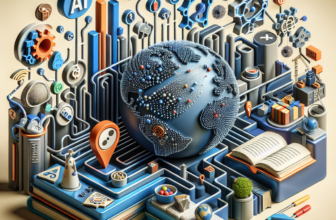The Evolution of Image Generation: AI’s Journey from Algorithms to Artistry

`
` The Evolution of Image Generation: AI’s Journey from Algorithms to Artistry `
`
From the early days of simple algorithms to the latest advances in artificial intelligence, the world of image generation has undergone an incredible evolution. With the help of AI, we’ve seen an explosion in the possibilities for creating realistic and breathtaking images that were once only possible through human skill and talent.
In this article, we’ll explore the evolution of image generation, from its humble beginnings to the cutting-edge technologies that are revolutionizing the way we create and experience visual art. We’ll take a look at the role of AI in this evolution and discuss the impact it has had on the field of image generation. We’ll also address some common questions about AI and image generation to help you understand this fascinating and rapidly growing area of technology.
`
` The Early Days: Algorithms and Filters `
`
In the early days of image generation, the primary tools at our disposal were simple algorithms and filters. These algorithms were often based on mathematical formulas that could create basic shapes and patterns, but they lacked the ability to create truly realistic images.
Filters, on the other hand, allowed us to apply various effects and modifications to existing images, but they were limited in their capabilities and often produced predictable and repetitive results.
Despite their limitations, these early tools laid the foundation for the development of more sophisticated techniques for image generation. They showed us what was possible and inspired the next generation of innovators to push the boundaries of what could be achieved with technology.
`
` The Role of AI `
`
Artificial intelligence has played a critical role in the evolution of image generation. With the advent of deep learning and neural networks, AI has been able to learn from vast amounts of data and refine its ability to create highly realistic and visually stunning images.
One of the most significant breakthroughs in AI image generation came with the development of generative adversarial networks (GANs). GANs use two neural networks, a generator and a discriminator, to create images that are virtually indistinguishable from real images. This technology has opened up new possibilities for creating art and has been used to generate everything from stunning landscapes to lifelike portraits.
Another key advancement in AI image generation has been the use of style transfer techniques. These techniques allow AI to apply the artistic style of one image to another, creating unique and visually striking results. This has led to the development of new forms of digital art and has expanded the possibilities for creative expression in the digital realm.
`
` The Impact on Image Generation `
`
The impact of AI on image generation has been profound. It has democratized the creation of visual art, allowing anyone with access to the technology to create stunning images and explore new artistic possibilities. It has also pushed the boundaries of what is possible in the realm of visual storytelling, allowing for the creation of immersive and compelling visual experiences in fields such as virtual reality and augmented reality.
AI has also had a significant impact on the commercial and industrial applications of image generation. It has been used to create realistic and detailed visualizations for everything from architectural design to product marketing, revolutionizing the way we communicate and interact with visual information.
In the entertainment industry, AI has opened up new opportunities for creating visually stunning and immersive experiences in fields such as film and video games. AI-powered image generation has allowed for the creation of stunning visual effects and lifelike character animations, pushing the boundaries of what is possible in the world of entertainment.
Overall, the impact of AI on image generation has been nothing short of transformative. It has pushed the field of visual art and communication to new heights and has empowered creators and innovators to explore new frontiers in the realm of visual storytelling.
`
` FAQs `
`
`
` Q: How does AI generate images? `
`
AI generates images using a variety of techniques, including deep learning and neural networks. These technologies allow AI to learn from vast amounts of data and create highly realistic and visually stunning images.
`
` Q: What are some common applications of AI image generation? `
`
AI image generation has a wide range of applications, including commercial and industrial visualizations, entertainment industry visual effects, and digital art creation.
`
` Q: How has AI impacted the world of visual storytelling? `
`
AI has had a profound impact on the world of visual storytelling, revolutionizing the way we create and experience visual art and communication.
`
` Q: What are some of the most significant advancements in AI image generation? `
`
Some of the most significant advancements in AI image generation include the development of generative adversarial networks (GANs) and style transfer techniques, which have opened up new possibilities for creating visually stunning and immersive experiences.
In conclusion, the evolution of image generation has been a fascinating journey from the early days of simple algorithms to the cutting-edge technologies of today. AI has played a crucial role in this evolution and has revolutionized the way we create and experience visual art. As the technology continues to advance, we can expect to see even more exciting developments in the field of AI image generation in the years to come.






